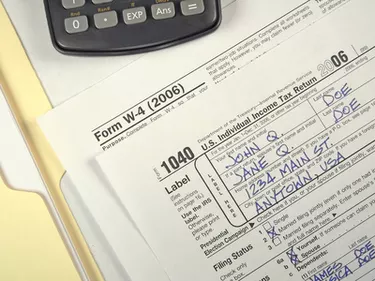
Since their inception in 2006, Roth 403(b) retirement accounts have become a favorite with investors, because during retirement their distributions are free from income taxes. They also do not face the same income and contribution limitations as Roth IRAs. Their drawback is that only employees of certain types of employers are eligible for the plans.
403(b) Basics
Video of the Day
403(b) plans are tax sheltered annuity (TSA) plans offered through employers such as public schools, colleges, 501(c)(3) nonprofits and religious institutions. Some 403(b) plans invest in annuity contracts through an insurance company while others are custodial accounts invested in mutual funds. Employees are restricted to the types of investment chosen by their employers, but many plans do offer individual choice of mutual funds. 403(b) plans are very similar to 401(k) plans except that they are restricted to not-for-profit employees.
Video of the Day
Contribution Limits
Roth 403(b) plans are subject to the same annual contribution limits as traditional 403(b)s. In 2011 the maximum contribution was $16,500, higher for individuals age 50 and older. Investors may contribute to both types of plans simultaneously, but annual contribution limits apply to a combination of contributions to a Roth 403(b) and traditional 403(b) plan. This means that if an investor decides to contribute $8,500 to a Roth 403(b), he cannot put more than $8,000 into a traditional 403(b) during the same tax year.
Difference between Roth 403(b) and Traditional 403(b) Plans
Traditional 403(b) plan contributions are made with pre-tax dollars, so the employees defer taxes until retirement, when distributions are taxed as ordinary income. Roth 403(b) plan contributions are made with after-tax dollars, so the employee's taxable income is not reduced. However, the investment account grows without tax consequences, and no income taxes are paid when distributions are taken, regardless of how much their value has grown.
Difference between Roth 403(b) and Roth IRA Plans
The Roth 403(b) is essentially a hybrid combining some features of a traditional 403(b) plan with some features of a Roth IRA. Roth IRA plans are self-established without any employer involvement or connection. Roth IRA investors must meet income eligibility requirements and cannot exceed the maximum allowable income for the tax year that contributions are made. 403(b) plans are only available through employers and have no upper income limit. It is possible to participate in a 403(b) plan through an employer and still be eligible to invest in a Roth IRA at the same time.